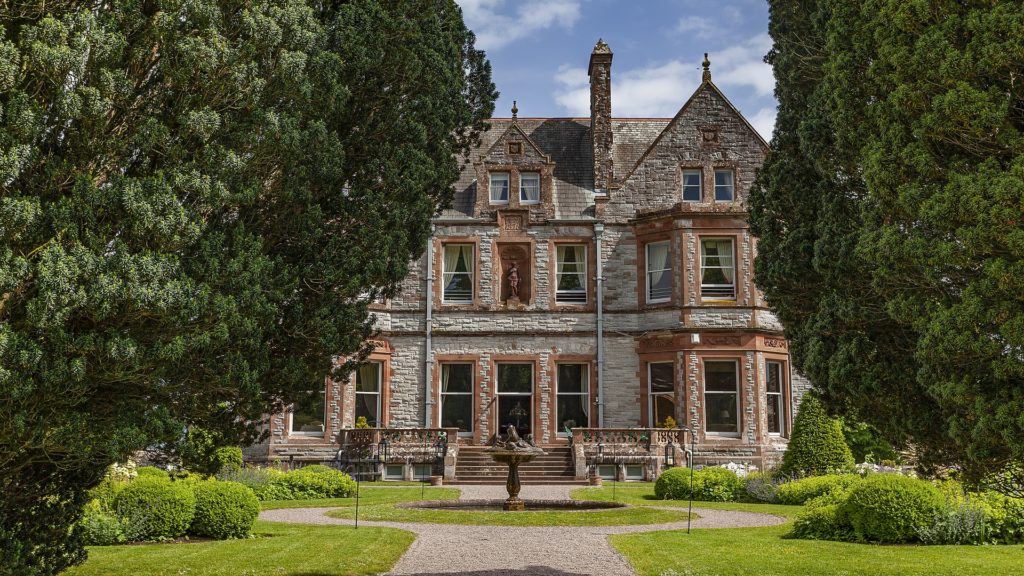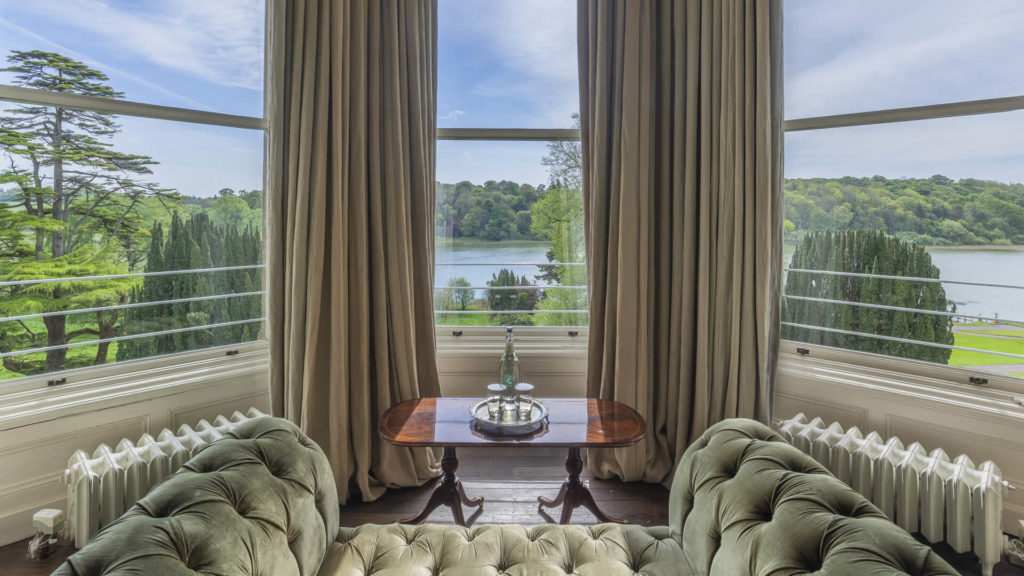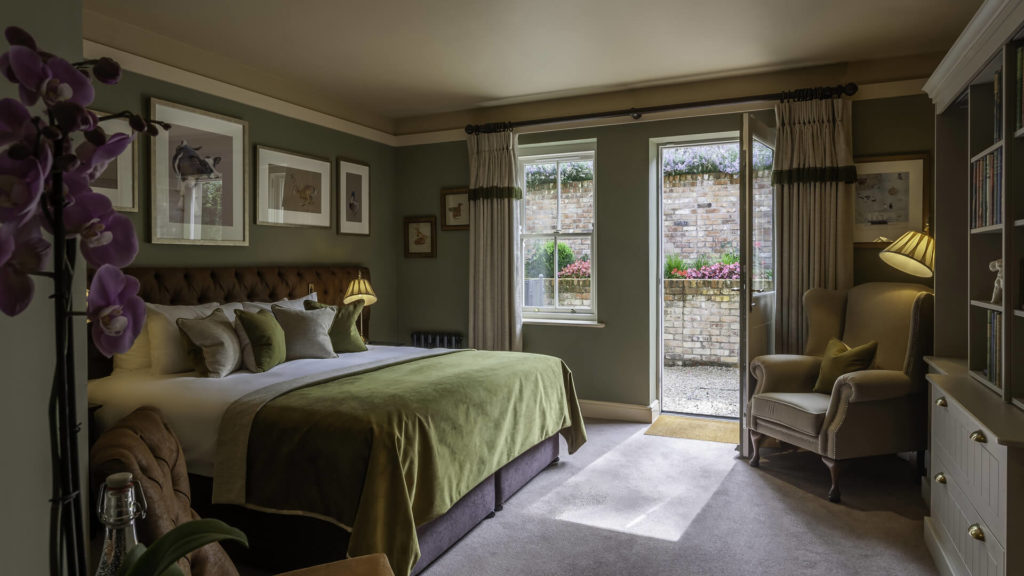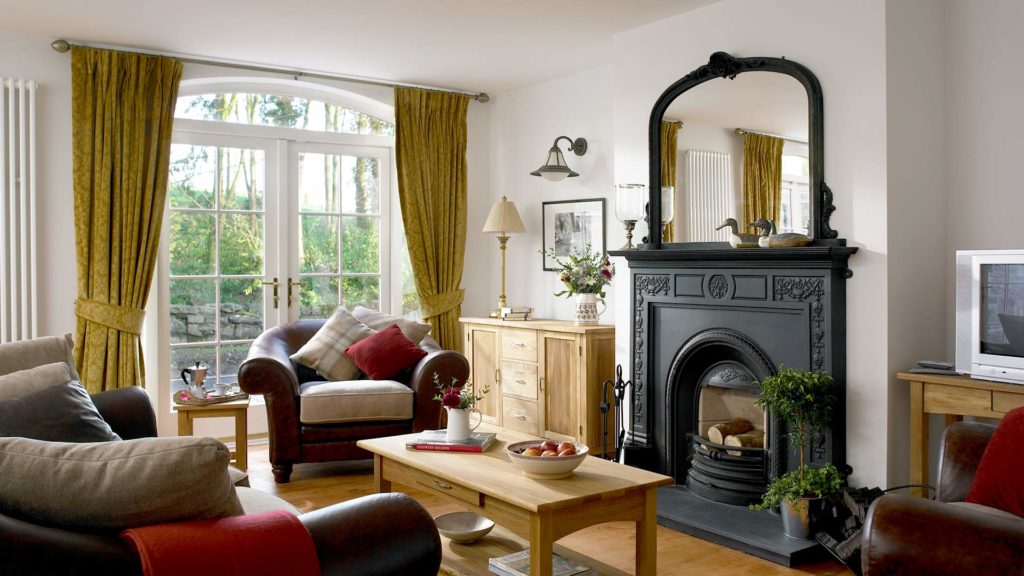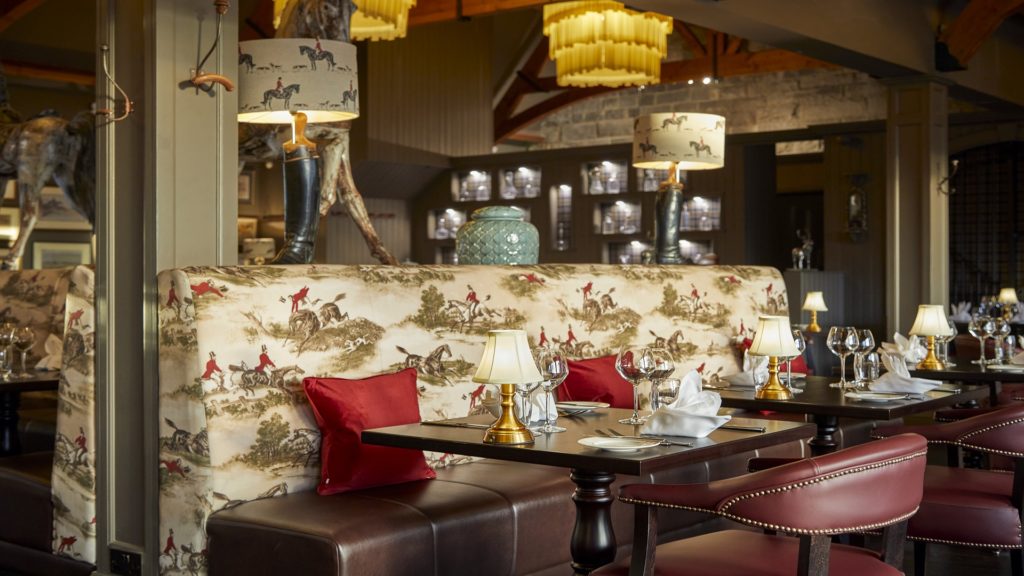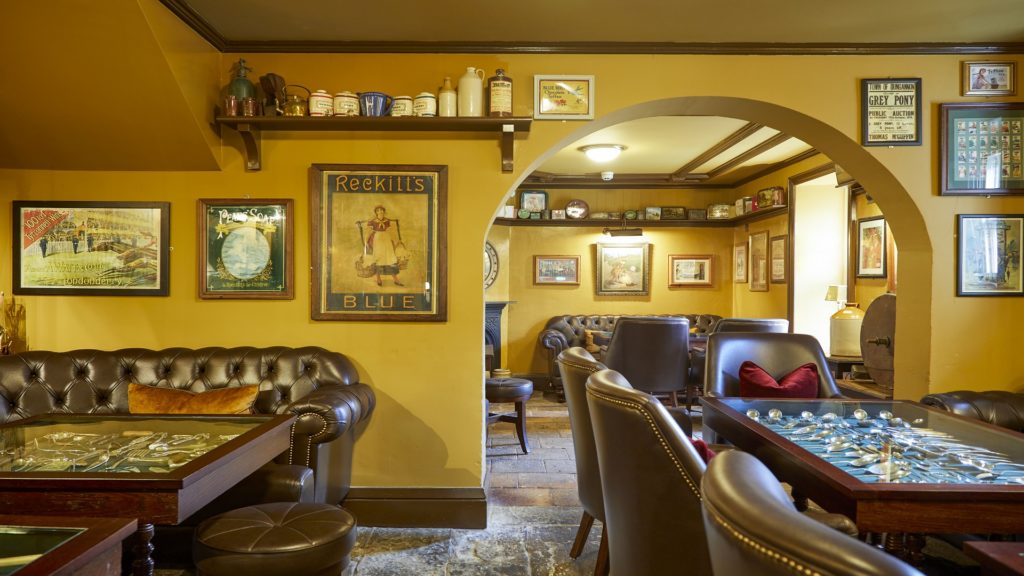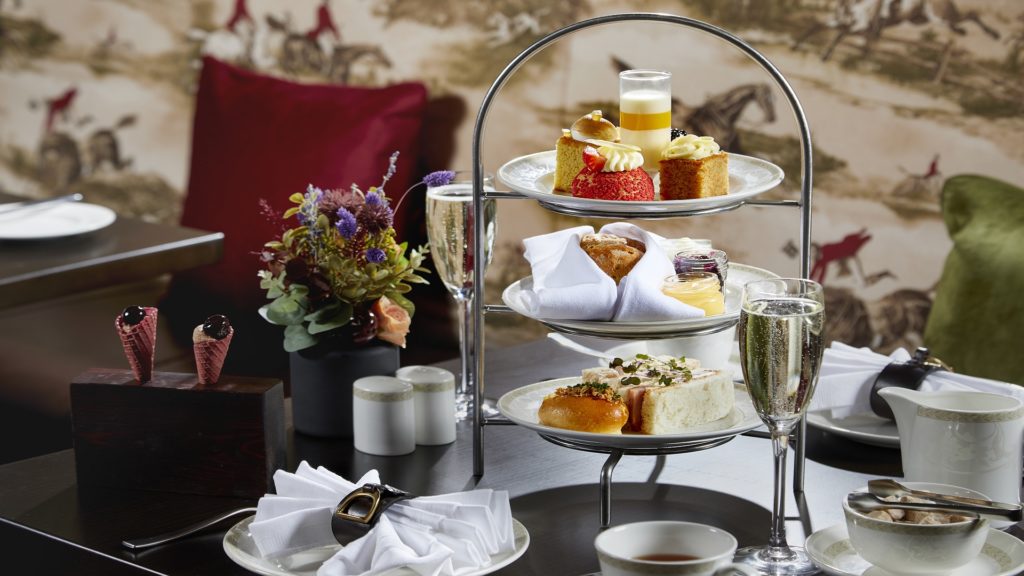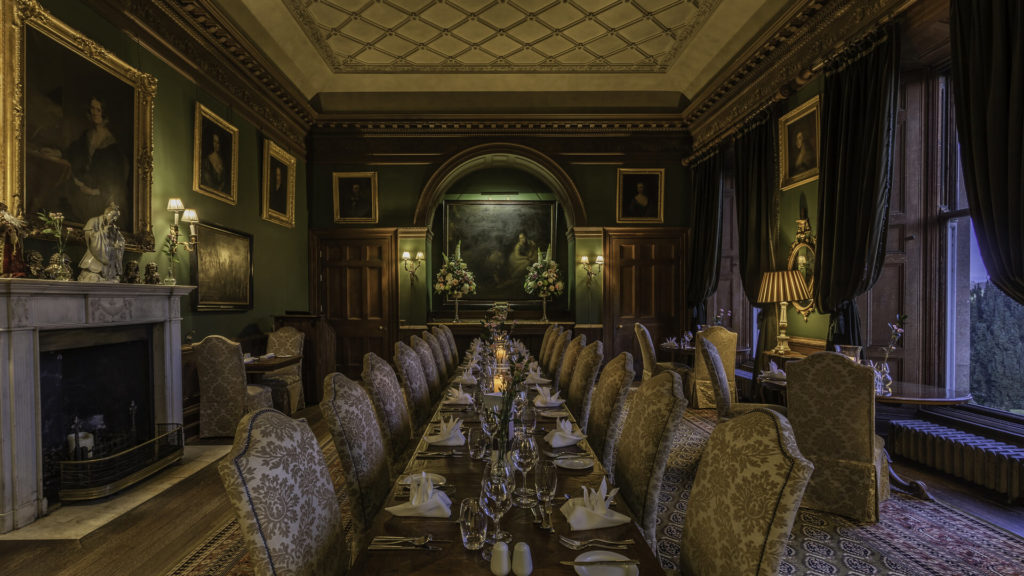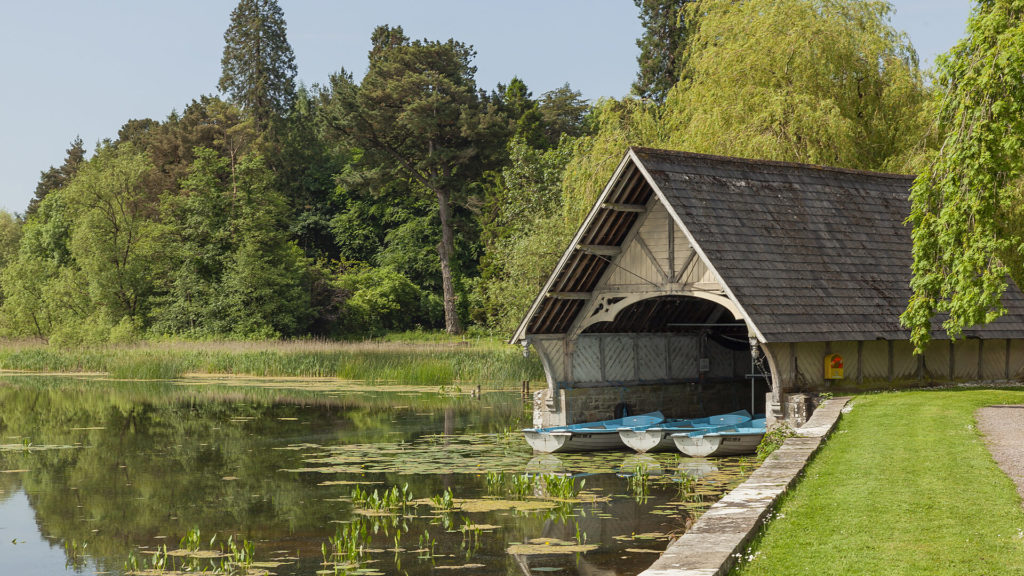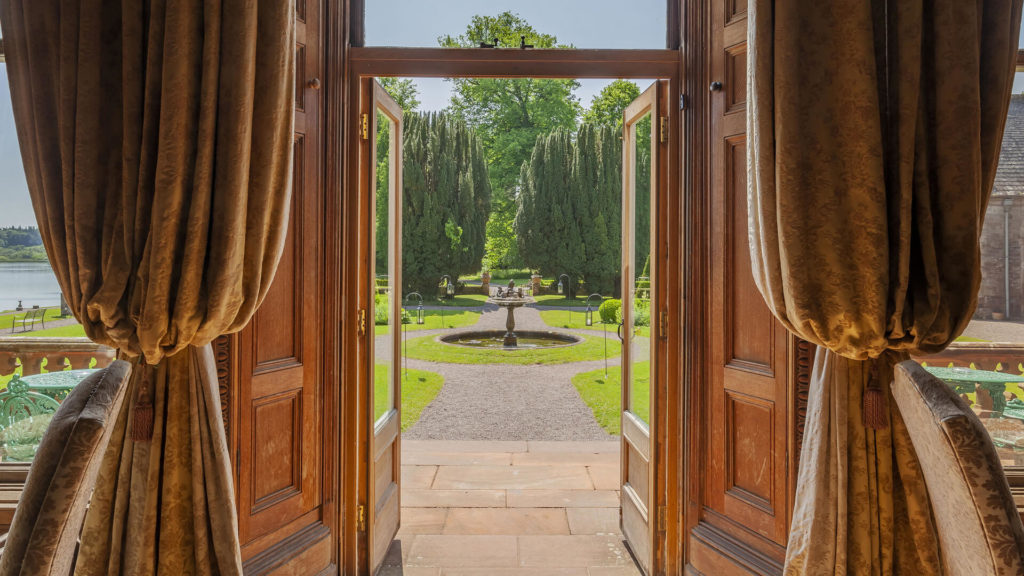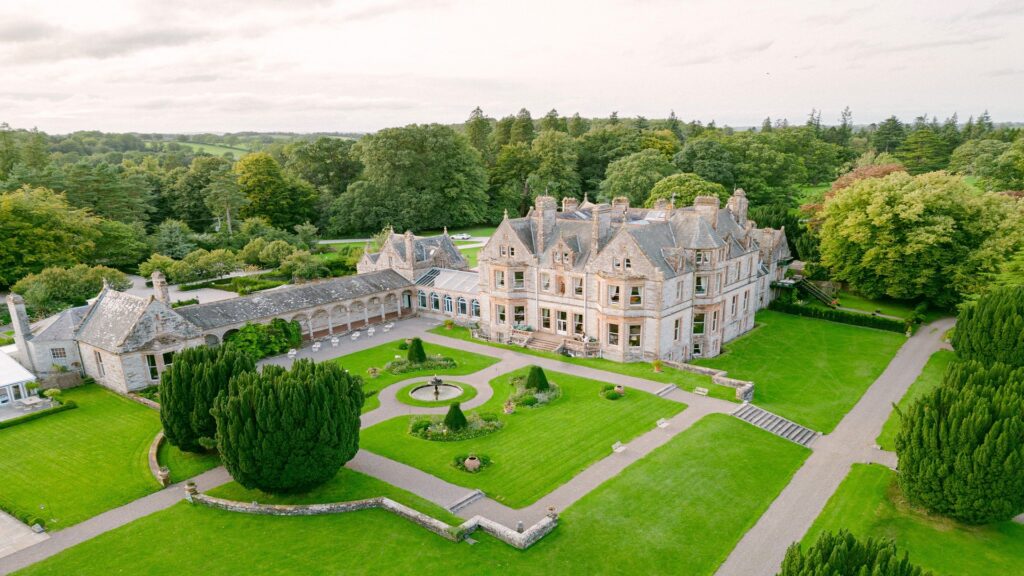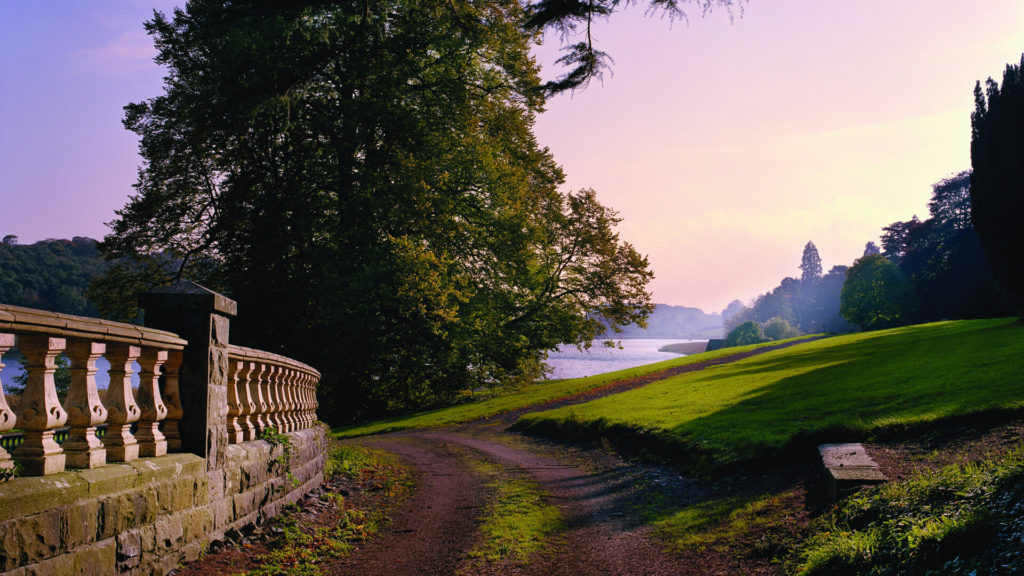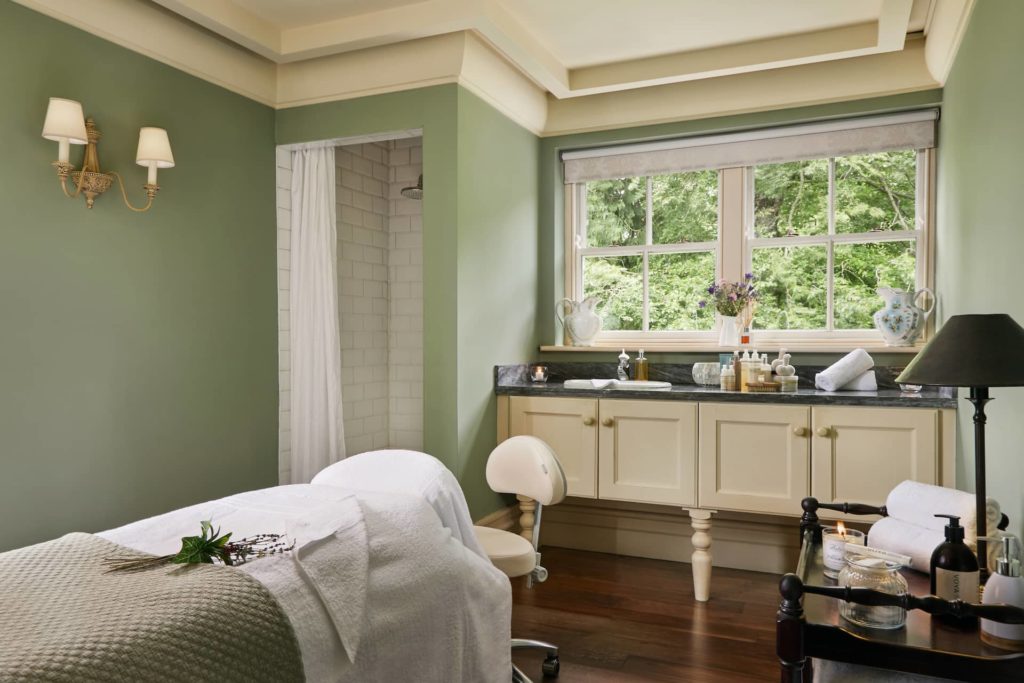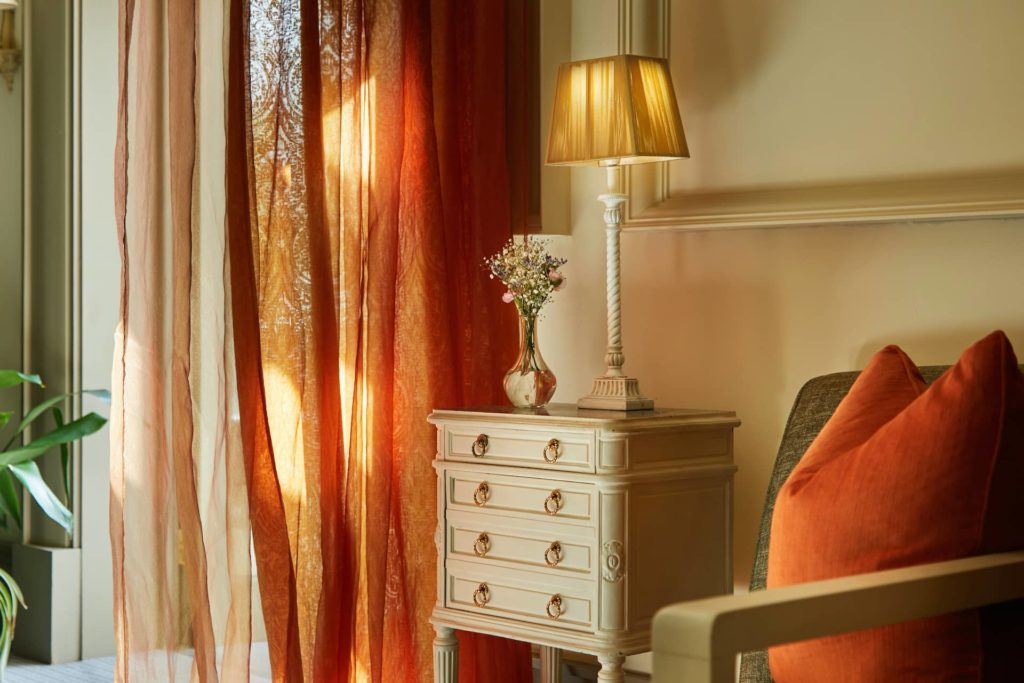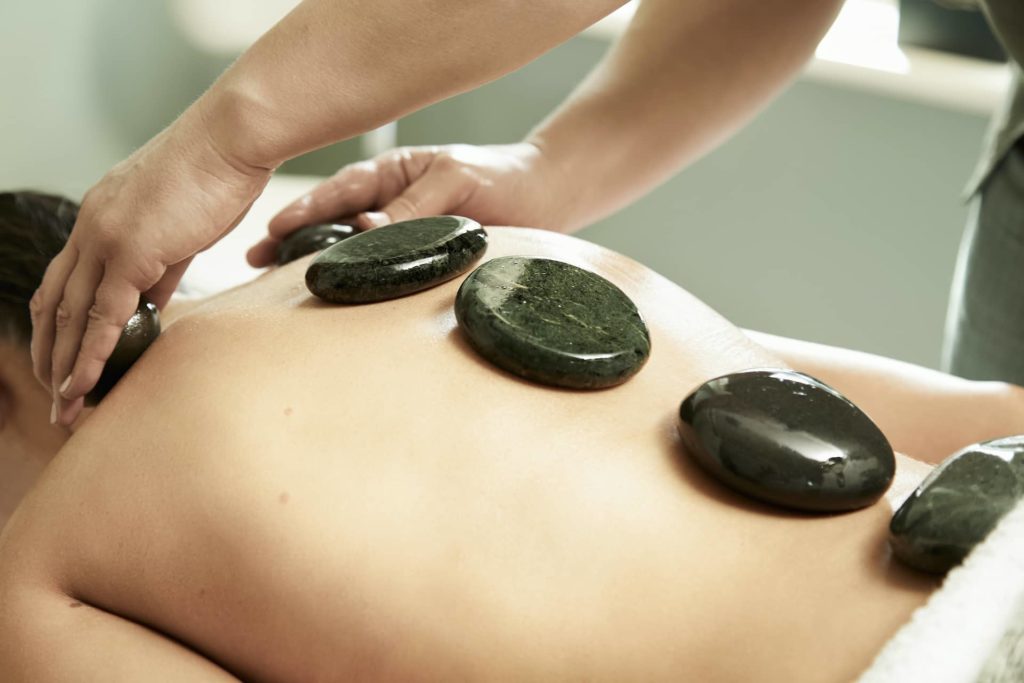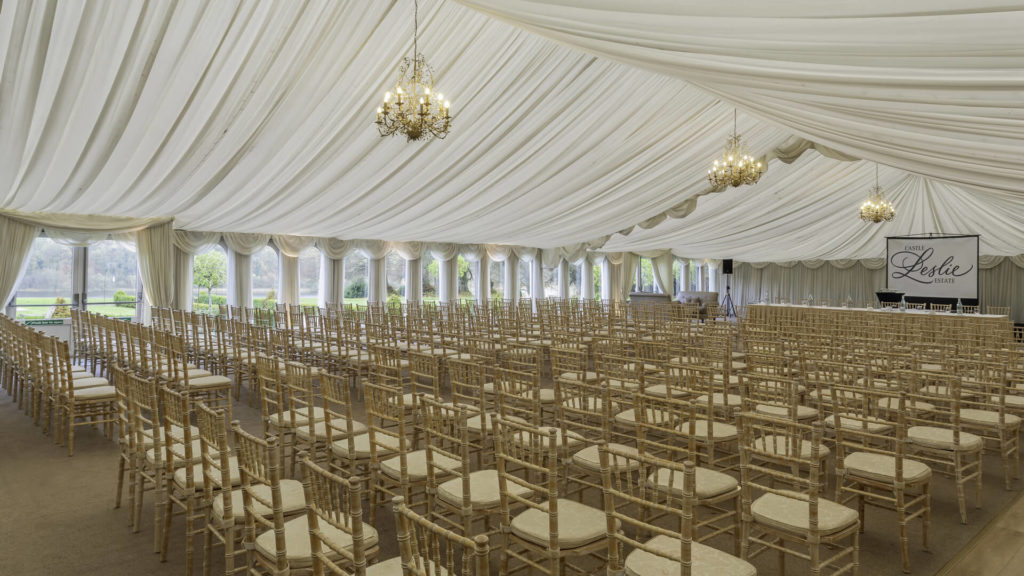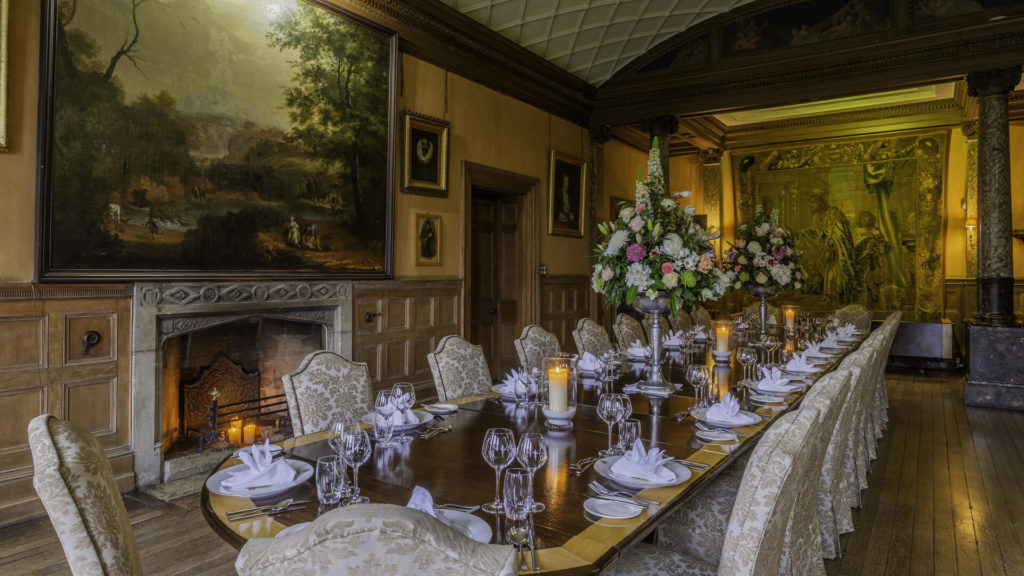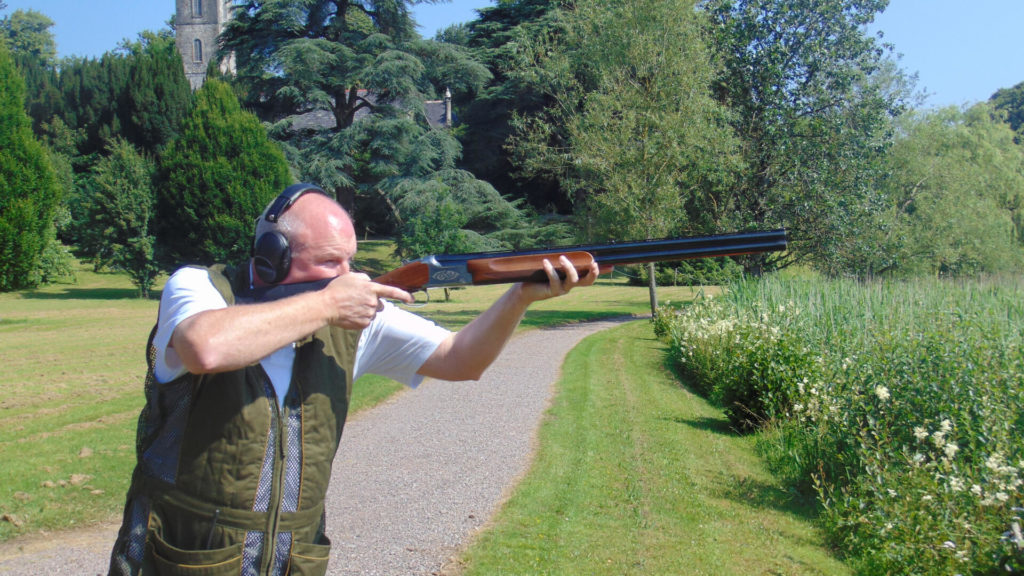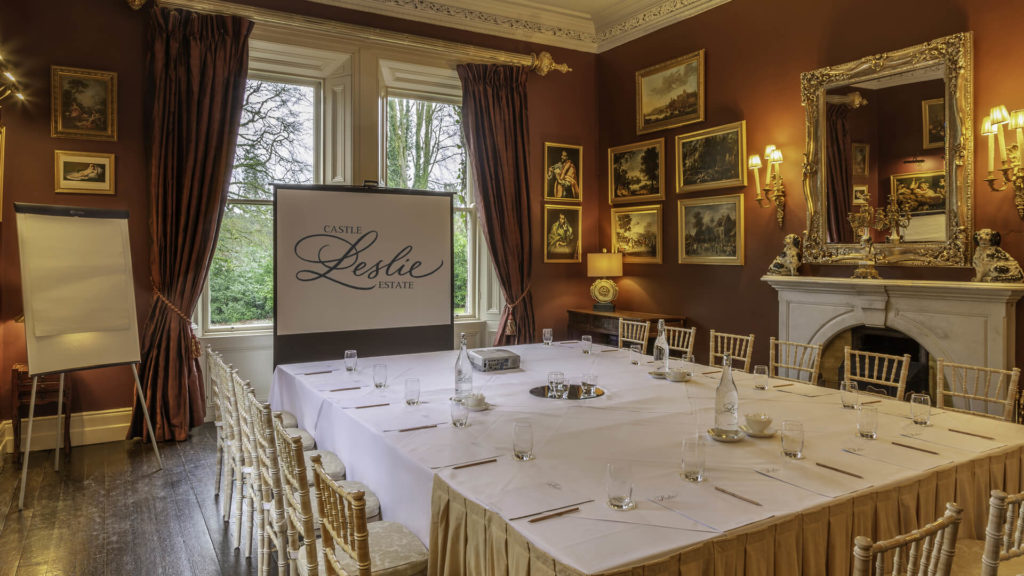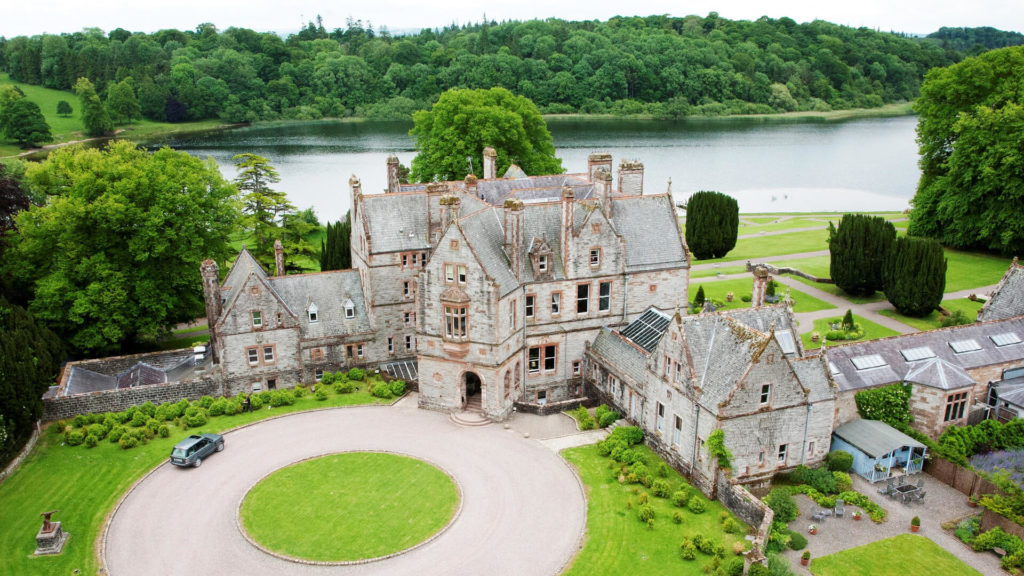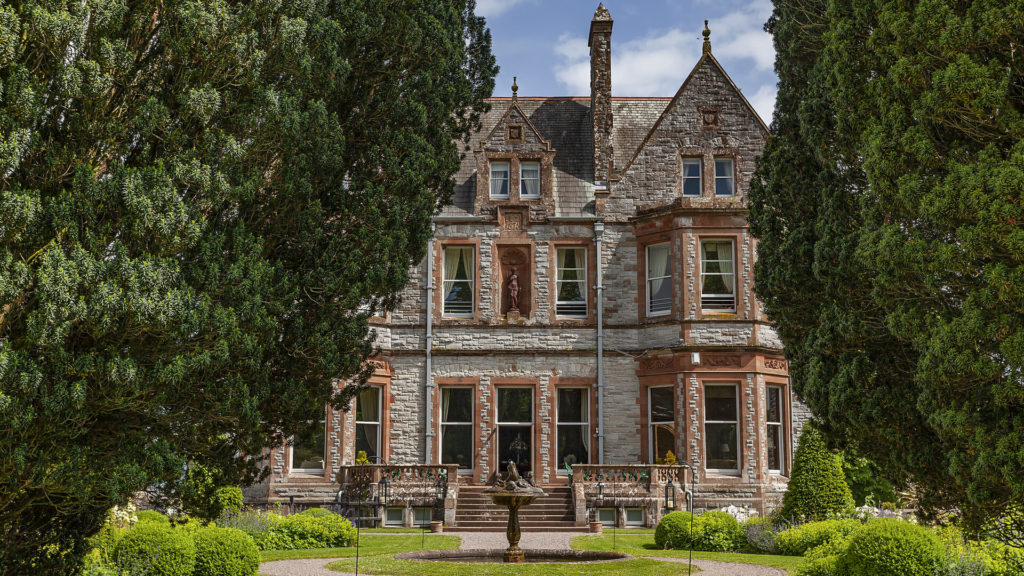Castle Leslie Estate History
Family History
The Leslie Family can trace its ancestry back to Atilla the Hun. The first Leslie came from Scotland and was a Hungarian nobleman called Bartholomew Leslie. He was the chamberlain and protector of Margaret Queen of Scotland. The family motto ‘Grip Fast’ originated through him. While fleeing enemies Queen Margaret rode pillion on the back of Bartholomew’s horse. When fording a river, the queen fell off and Bartholomew threw her the end of his belt and told her to grip fast the buckle. He saved the Queen’s life & from that day onwards she bestowed the motto Grip Fast on the Leslies.
The first Leslie to come to Ireland was Bishop John Leslie who was Bishop of the Isles of Scotland. In June 1633 he was translated (it seems that only bishops and foreign languages can be translated) to Raphoe in Donegal where he built Raphoe Castle. At the age of 67 the Bishop married a young girl called Catherine Cunningham. They had five children, two of whom lived to adulthood. Bishop John Leslie was known as the ‘fighting bishop’ and defeated Cromwell’s forces at the Battle of Raphoe. On the Restoration of Charles II, the Bishop, then 90, rode from Chester to London in twenty four hours. As a reward for his loyalty, the King granted him £2,000.
In 1665 Glaslough Castle and Demesne was sold by Sir Thomas Ridgeway to the Bishop of Clogher, John Leslie. The Bishop died at the age of 100 in 1671. The original deed to the Castle is still in the family archives.
The Bishop’s son John, then 26 years of age, inherited the Estate but very little is known of him except that he never married and that he was Dean of Dromore. His brother Charles succeeded him but at seventy one years of age he only enjoyed the Estate for a few short months and died the following year. Charles was a theologian with a fury. Oliver Goldsmith mentions him as an arguer of some wit and Dr. Samuel Johnson wrote of him that ‘he was a reasoner not to be reasoned with’. Charles, a non juror, leveled bitter attacks on the penal laws and stridently defended the Catholics, which deeply offended King William. Today he would surely have been an editor of ‘Private Eye’ or a producer of ‘Spitting Image’. He was arrested for high treason but he managed to give his captors the slip and he fled to France. When King Billy died, George I pardoned him and said ”let the old man go home to Glaslough to die’. He left three children Robert, Henry & Vinegar Jane. Henry & Robert were great friends of Dean Swift who was a regular visitor to the Castle on his way to Armagh. He wrote many verses about the Leslie’s, not all of them complimentary. Some of them went like this;
Robin (Robert) to a beggar with curse
Will throw the last shilling in his purse
But when the coachman comes for pay
That rogue must wait another day.
Or
Here I am in Castle Leslie
With rows and rows of books upon the shelves
Written by The Leslies
All about themselves.
Charles Powell Leslie I took over the Estate in 1743. Charles was a man of most remarkable common-sense and practical ideas. He devoted himself to the improvement of farming methods in the district. He was elected MP for Hillsborough in 1771 and MP for Monaghan in 1776. In 1779 he became very active in the great Volunteer Movement and was colonel of the Trough Volunteers. In 1783 Grattan’s Parliament was established (under pressure from 80,000 Volunteers). Charles represented the County of Monaghan and in his election speech of 1783 stated ”I desire a more equal representation of the people and a tax upon our Absentee Landlords”.
They say that the Battle of Waterloo was won on the playing fields of Eton. More likely it was won at Castle Leslie Estate, when Charles Powell Leslie decided to help his impoverished brother -in-law, Lord Mornington, professor of Music at TCD to educate his son Arthur. Had he not done so Arthur would never have grown up to become the famous Duke of Wellington and defeat Napoleon at Waterloo. We would have passed the years since 1814 coping with EEC bureaucracy, speaking compulsory French and enduring good cooking. Charles died with the Parliament he had honorably fought to maintain in 1800 and was one of the few landlords to refuse Castlereagh’s bribe of a peerage to vote for the Act of Union with Britain in 1800.
His son Charles II Powell Leslie took over the Estate but died shortly before the years of the Great Hunger. He was a keen amateur architect designing the present farm buildings and the fairy tale gate lodge which looks down the lake to the Castle. His widow Helen ran the Estate during the time of the famine.
She was a very able lady and managed to feed all the people on the Estate. She had a famine wall built around the Estate to provide work (this was not to keep the Leslie’s in as some people have suggested) and set up soup kitchens to provide food for the starving. She continued to run the Estate most capably until her son Charles Powell Leslie III came of age.
Charles Powell Leslie III simply loved big house parties and wanted to entertain on a grand scale. His taste in architecture included ‘Free Range Gothic’, ‘Early Taj Mahal’, ‘Late Rothschild’, ‘Bahnhof Baroque’ and ‘Jacobean Bloody’. Some of his plans included a cut price copy of the French Chateau de Chambord at least six times larger than the present house and a nine-story gothic tower, in the middle of the lake, reachable only by Venetian gondolas. Charles Powell Leslie III never married but he did completed a number of successful building projects, among them the Grain Merchant Store in Glaslough village and the entrance lodges at the main gates to the Castle. Sadly for Charles, but fortunately for Leslie family finances, he choked on a fish bone before he could realise any of his major architectural fantasies. He died in 1871 and the building of a new castle was left to his brother John.
John Leslie (later to become Sir John Leslie, 1st Baronet of Glaslough) was a fine painter of the Pre Raphelite school. It was he who built the Castle at the insistence of his pretty young wife Constance. Constance was the daughter of Minnie Seymour who was allegedly George IV’s daughter by Mrs. Fitzherbert. You could say the family is related to royalty on the wrong side of the banquet. While it was being built she and her husband went on a Grand Tour and collected much of the present furniture in the house. It has a strong Italian influence with many pieces from the 16th and 17th century. As Sir John grew older, Lady Constance could bear the sight of him no more and designed an enormous floral table ornament which effectively hid her husband from view at the dinner table. She called it ”un cache marie” (hide husband). Following their Golden Wedding in 1910, they moved to Manchester square in London where Sir John died in 1916. On her death Lady Constance was seen by servants walking around the Castle. She died in London on the same day in 1925.
Finances took a dive when the Leslies invested their compensation money from the Wyndham Land Acts in Russian Railway Bonds, on the advice of the Queen’s financial advisor Sir Ernest Cassell. That was in 1917. The rest is history.
Sir John Leslie, 2nd Baronet, was the only son of five children the other four being girls. He was a great wit and raconteur but not quite so good a painter as his father. He married the delightful Leonie Jerome, whose stunning elder sister Jenny married Lord Randolph Churchill. Both sisters were brilliant pianists and pupils of Czerny. The Bechstein piano in the Drawing Room was specially chosen for her by the famous concert pianist Padeweski and is over 100 years old. There are many of the Churchill’s ‘hand me downs’ in the Castle as the Leslies were considered the poor relations. Though Jennie was the family beauty, Leonie enchanted young and old alike, until her death in 1943, with her wit, sympathy and sound advice. On her death bed she was attended to by nurses around the clock. On her last night, while the nurse was dosing off, an elderly woman approached Leonie, spoke to her and left the room. The nurse passed no remark as she thought it was one of the family. Leonie died peacefully in her sleep. After the funeral everyone was sitting in the Dining Room when the nurse remarked that the lady in the portrait to the left of the fireplace (Lady Constance) was the one who had visited Leonie on her death bed. Lady Constance had died in 1925. Sir John Leslie, 2nd Baronet, died in 1944.
Sir Shane Leslie, 3rd Baronet, Irish speaker, author, poet and ardent nationalist became a Catholic and stood as Nationalist candidate for Derry in the 1910 election. He lost by a mere 59 votes to the Duke of Abercorn. He then decided to leave the sinful world and retreat into a monastery. This did not go down very well with his Protestant family, who were delighted when he met and married an American beauty, Majorie Ide of Vermont, and forgot all about the priesthood. Majorie’s father, Henry Clay Ide, was Chief Justice of Samoa, a tropical paradise where he and his daughters became great friends of fellow islander Robert Louis Stevenson. Ide was Governor General of the Philippines and lived with his family in the Malacanan Palace which is now apparently a museum for all infamous shoes of Imelda Marcos.
Finding the prosaic business of running an estate uncreative and boring, the poetic Sir Shane transferred the property to his eldest son, John Norman Leslie who became the 4th Baronet. Owing to ill health, from five years in a prisoner of war camp, he transferred the Estate over to his sister Anita and lived the next 40 years in Rome until his return home to Castle Leslie Estate in 1994 where he still lives.
Anita Leslie-King the biographer had a distinguished war career. She joined the French Army as an ambulance driver and at times actually drove her ambulance behind enemy lines to rescue Frenchmen from the notorious prison work camps. She was awarded two Croixes de Guerre by General de Gaulle for her work. She married Bill King, the famous submarine commander. In the 1960’s she moved to Oranmore in Galway and transferred Glaslough to her younger brother Desmond.
Desmond, one of the few surviving wartime Spitfire pilots, was also an author and composer of electronic music. During the war he destroyed a number of aircraft, most of which he was piloting at the time. In the 1950’s he was the first to realise that UFO’s have always been with us and his world best seller ‘Flying Saucers Have Landed’ was the first book to record human contact with an alien.
In 1991 he handed the Estate over to his five children and Castle Leslie Estate is now run by his daughter Samantha Leslie.
Copies of the Estate and Family History can be downloaded below.
Regeneration History
Castle Leslie Estate’s colourful history is awash with politics, royalty and war.
The Leslie family has lived on the Estate since 1665. The land was purchased with a £2000-reward given to John Leslie, the fighting bishop, by King Charles II. The Family’s non-conformist ancestors include warlike bishops, politicians, social reformers, agricultural innovators, philanthropic wives, fine pre-Raphaelite painters, furniture collectors, writers and war heroes. They’ve been connected with royalty, ambassadors and prime ministers, and regularly visited by foreign émigrés, wits, poets and infamous kleptomaniacs.
The Estate was passed to Desmond Leslie in 1964 and subsequently to his daughter Samantha Leslie. The size and nature of the Estate, the cost of its upkeep and the effects of the troubles on the border county ensured that Castle Leslie Estate was a ‘hot potato’ within the family. Typifying the Victorian excesses of its day, the Castle was built by Sammy’s great great grandfather. When Sammy took it over from her father, she recognised it as a commercially viable opportunity that would not only ensure the future safekeeping of the Estate and its history but also prompt its regeneration. Sammy’s ambition was to bring the Estate back to life, gain sustainability through tourism and work symbiotically with local communities. She also wanted to have fun in the process! Her desire was to restore the Castle in the style and manner it was built to enable guest entertainment on a grand scale. But she started small, establishing tea rooms in the old conservatory thereby creating income to restore the roof. Between 1995 and 1997, Sammy refurbished fourteen of the Castle bedrooms and bathrooms, each in its own unique style, in an effort to maintain the individuality and uniqueness of the property. Dinners were served by candlelight in the original dining room, just as it had been in the old days, with pre-dinner drinks served in the Drawing Room or Fountain Garden. The Castle at Castle Leslie Estate was soon rewarded with The Good Hotel Guide Caesar Award for being ‘utterly enjoyable and mildly eccentric’. It is a wonderful refuge for grown-ups where there are no TVs or radios – just wonderful food, relaxed and friendly service, lazy breakfasts served until eleven and picnics by the lake. When peace finally came to Northern Ireland with the Good Friday Agreement, the Leslie Family took the opportunity to restore the rest of the Estate, slowly but surely, to its former glory.
In June 2002, Castle Leslie Estate hit centre stage when it hosted the wedding of Paul McCartney and Heather Mills. Over 800 million people worldwide saw the event on TV which had a huge impact on the progression of Castle Leslie Estate and the border counties. In 2004, after 20 years in external ownership, the Estate’s Equestrian Centre and The Lodge (formerly named The Hunting Lodge) were re-purchased. Having secured euro cross-border funding, the family set about restoring and regenerating the Castle at Castle Leslie Estate. The redevelopment of the Long Gallery Wing in the Castle enabled the Estate to offer business and corporate facilities. The addition of six further guestrooms brought the room total in the Castle to 20. The transformation of the old Victorian Kitchens into a Cookery School added another dimension to the expanding Estate. With 78,000 square feet of historic buildings, miles of famine wall and the The Lodge (formerly named The Hunting Lodge) back in the fold, funding was sourced for reinvestment in the Estate. Inspired by Poundbury, the town Prince Charles built in England, Sammy Leslie worked with a team of Irish architects to extend the village of Glaslough back over the Estate where it had been, prior to a fire in the 1850s.
A seamless extension to Glaslough village, the Village Cottages are built around a Village Square and Green. Sammy wanted to ensure that the development would be sensitive to the Irish Countryside and sympathetic to the current style of the existing village so she called in specialists in conservation and heritage architecture to design the development. All proceeds from the sale of the houses are re-invested to fund the continual regeneration of the Estate. Located at the gates of Castle Leslie Estate, The Lodge (formerly named The Hunting Lodge) and Equestrian Centre underwent extensive refurbishment and renovation before re-opening in May 2007. Both had been in the Leslie family for many years until 1984 when Desmond Leslie sold them. It was in the midst of the Irish troubles and his daughter Sammy had just qualified as an intermediate instructor. Undeterred, Sammy set up a yard in the old Estate farm buildings. Here she bought, sold and broke horses until 1987, vowing to re-purchase The Lodge (formerly named The Hunting Lodge) when she could. She achieved her goal in 2004. All the hard work and commitment started to pay off in 2005 when Castle Leslie Estate won the Sunday Times ‘Best Country House’ and Food & Wine’s ‘Best Country House Restaurant in Ulster’ awards. More recognition followed in 2006 with the Hotel & Catering Review Gold Medal Award for Best Country House which recognises excellence in 11 categories. In January 2006, work started on the €10million refurbishment to expand and improve the existing facilities – the 29-bedroomed Lodge (formerly named The Hunting Lodge) and the new state-of-the-art Equestrian Centre. The project was supported by grant aid from the Irish Government and part-financed by the European Union under the National Development Plan 2000-2006, administered by Fáilte Ireland. This has allowed Sammy to go back again to her original dream – great horses, good food and old-style hospitality.
But never one to rest, she has already identified a number of future projects including the restoration of the Walled Garden and Gate Lodge.
A copy of the History of the Regeneration of the Estate can be found below.
